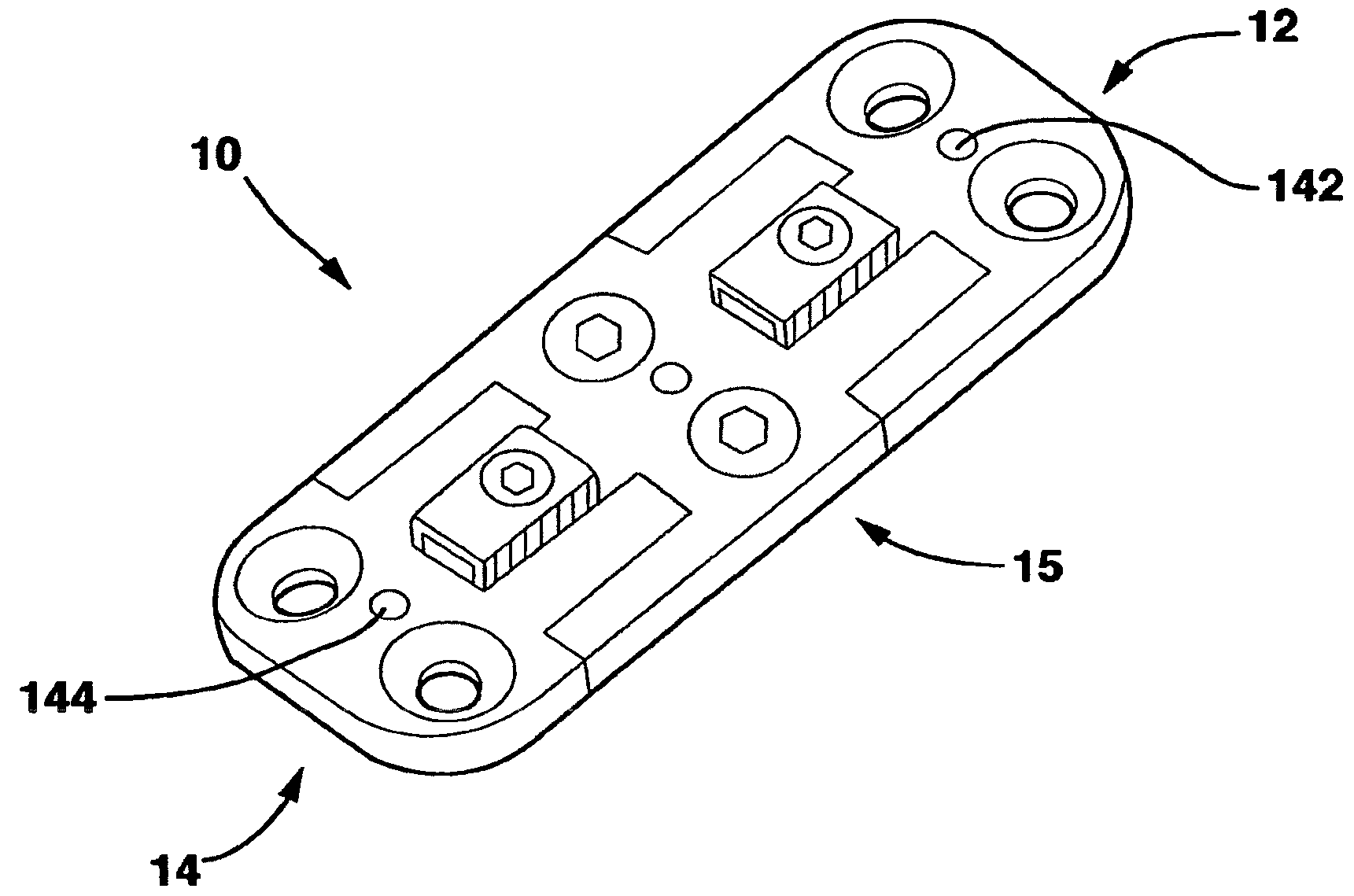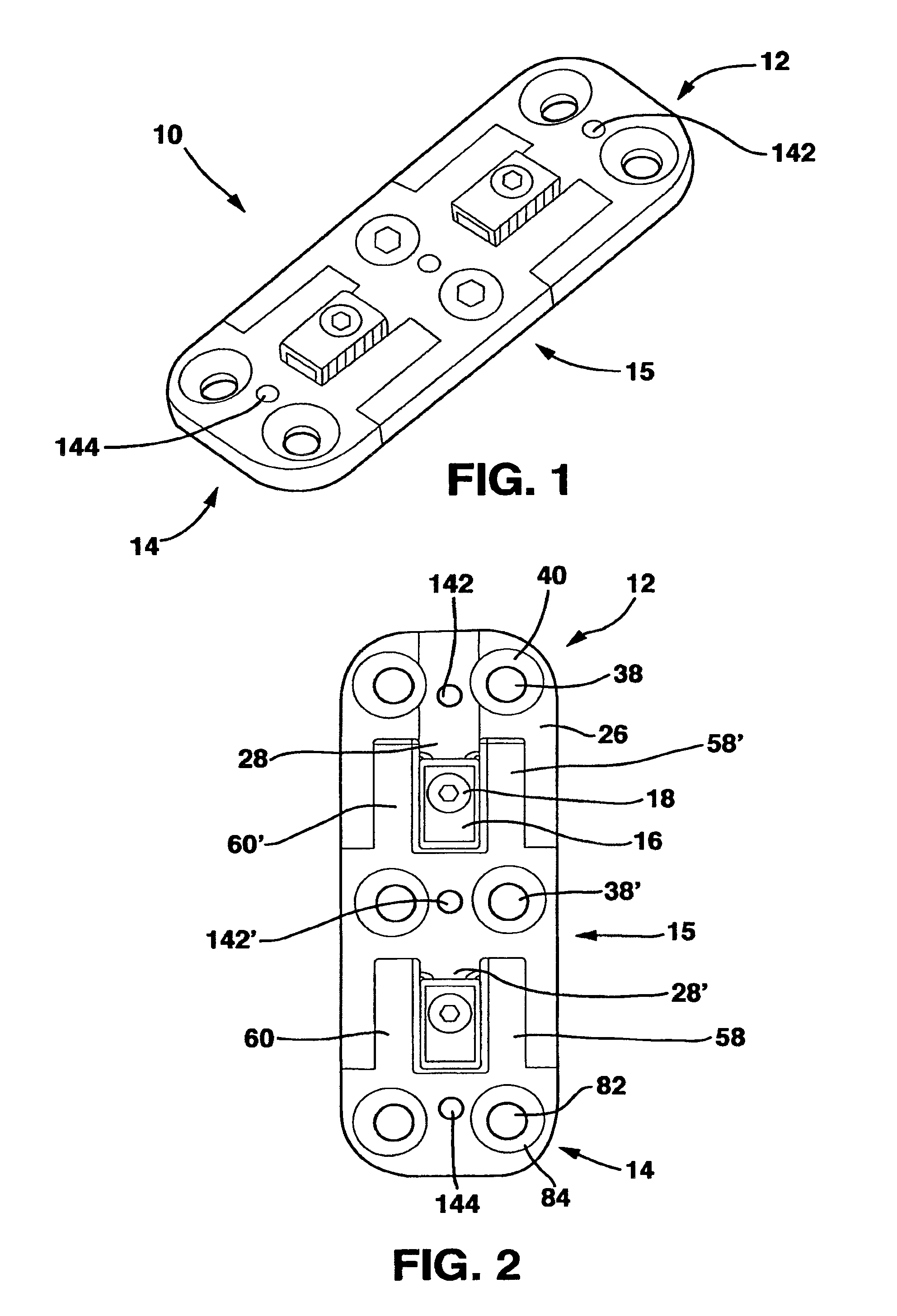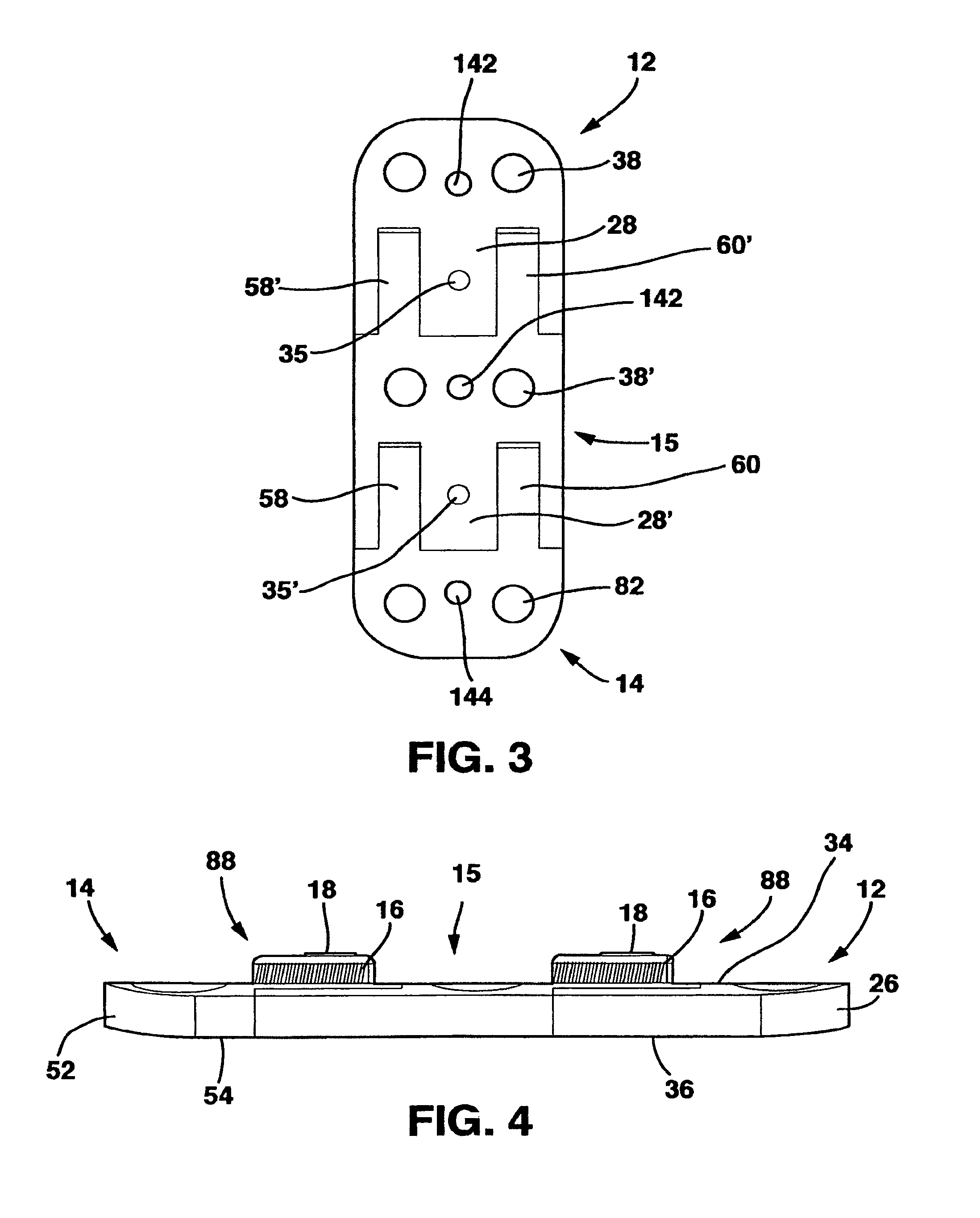Method of compressing adjacent pieces of bone
a bone and adjacent technology, applied in the field of bone compression, can solve the problems of significantly increasing patient morbidity, reducing fusion rate, and many problems, and achieve the effects of facilitating fusion of these vertebrae, facilitating union, and more control over for
- Summary
- Abstract
- Description
- Claims
- Application Information
AI Technical Summary
Benefits of technology
Problems solved by technology
Method used
Image
Examples
Embodiment Construction
[0078]The SC device 10 in a preferred embodiment shown in FIGS. 1-14 and 18 has five main parts, a male plate 12, a female plate 14, an interconnecting plate 15, a locking clamp 16 and a locking screw 18 that, in combination with standard cancellous bone screws (not shown) fix the SC device 10 to the patient's vertebrae. The SC device 10 has a top side 20, a bottom side 22 and opposed medial sides 24.
[0079]The male plate 12 has a male main body 26 and a central protrusion 28 extending away from the male main body 26. The central protrusion 28 has a top surface 30, a longitudinal axis 32, a bottom surface 33 and parallel sides 36. Central protrusion 28 also has a threaded whole 35 in the top surface 30.
[0080]The male plate 12 also has a pair of side protrusions 29 extending away from the male main body 26 on opposite sides of the central protrusion 28. Each of the side protrusions 29 has an inner surface 37 and an outer surface 39. The inner surfaces 37 are directed toward the centra...
PUM
 Login to View More
Login to View More Abstract
Description
Claims
Application Information
 Login to View More
Login to View More - R&D
- Intellectual Property
- Life Sciences
- Materials
- Tech Scout
- Unparalleled Data Quality
- Higher Quality Content
- 60% Fewer Hallucinations
Browse by: Latest US Patents, China's latest patents, Technical Efficacy Thesaurus, Application Domain, Technology Topic, Popular Technical Reports.
© 2025 PatSnap. All rights reserved.Legal|Privacy policy|Modern Slavery Act Transparency Statement|Sitemap|About US| Contact US: help@patsnap.com



